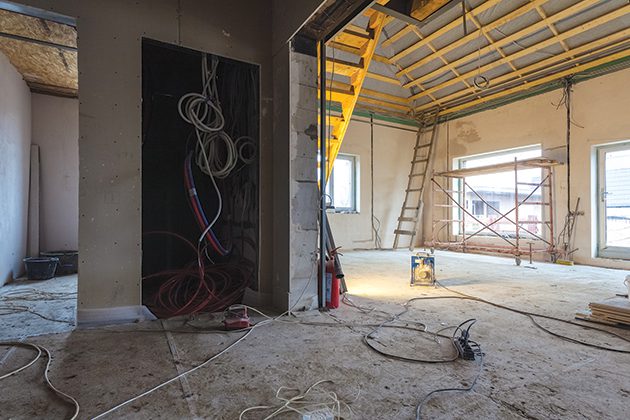This post first appeared on Risk Management Magazine. Read the original article.

Check out more from Risk Management on:
Disaster Preparedness
Disaster Recovery
Natural Catastrophes
Companies routinely go to great lengths to increase productivity and efficiency in pursuit of cost savings, higher profits and other important business goals. Yet many organizations still fail to plan and prepare properly ahead of disasters to reduce their liabilities.
Without a good plan and the right partners, recovery from a disaster can take months longer than expected. The costs of these delays to the business can quickly become staggering, even wiping out years’ worth of important efficiency gains made in other areas.
The 2017 Wake-Up Call
The natural disasters that hit the United States in 2017 underlined the complex recovery challenges that risk managers and senior business leaders face in the aftermath of a disaster. For example, during Hurricane Harvey, which battered the Houston metropolitan area, floodwaters swelled to 10 feet or higher in some buildings, which could mean highly toxic chemicals and other pollutants in the water. There were also airborne contaminant risks, mold remediation concerns, slippery surfaces and dangerous wet electrical outlets and systems to contend with. In some cases, a structural engineering team had to be brought in to shore up the building before it was safe enough for a crew to enter.
While working to address the major physical damage to their buildings, businesses also had to sort through their different insurance policies to make sure they were addressing qualifications and requirements.
In the end, many businesses that thought they had a decent disaster restoration plan in place before Harvey discovered that recovery would actually take a lot longer than expected.
The Importance of Good Partnerships
Many companies’ recovery efforts fell short in 2017 because they did not have the right restoration contractors, insurance partnerships and internal processes in place to properly address challenges.
In some cases, local or regional contractors were simply not equipped to handle such widespread devastation. In other cases, companies began calling restoration providers on their vendor list only after the hurricanes hit, but had not established a prior working relationship, so the vendor did not understand the company’s specific business and insurance requirements.
In both scenarios, risk managers often find themselves spinning their wheels. If they are lucky enough to find a contractor at the eleventh hour, there is no guarantee that the contractor will have the ability and expertise to get the job done properly, which could mean costly delays and rework.
Another mistake that many companies make is failing to differentiate between a typical general contractor and one that is experienced in dealing with a wide range of disasters. If a roof is damaged in a hailstorm, for example, there may be dozens of local vendors who could easily take care of the job. But in a true large-scale disaster, such as a hurricane or earthquake, the number of contractors with the depth of skills, equipment and relationships needed to understand and quickly address all the different types of damage on the premises quickly shrinks.
How to Accelerate Recovery
Although largely overlooked, your choice of restoration contractor can have a significant impact on disaster recovery time and costs.
With proper planning, a good restoration contractor should be able to reduce a business’s cost of getting back on its feet by 20% to 50% and reduce downtime by as much as 50%. The key is to establish a partnership with an experienced provider that can coordinate with all the stakeholders in the recovery process.
It is also important to remember that part of the responsibility for a quick recovery rests on your shoulders. That means you must open the lines of communication with your restoration provider before a disaster to discuss the nuances of your business and your insurance coverages. Ongoing discussions will not only improve safety during a disaster, but pay huge dividends in time, money and safety after a disaster by helping streamline decision-making and avoid costly starts, stops and reversals.
Of course, figuring out if a restoration provider has the right balance of contracting expertise and process orchestration skills is easier said than done. Here are six things to keep in mind as you evaluate potential partnerships:
- Ask about their safety program. Find out if they have a robust program in place and whether they practice safety on the job and in their daily work routines. Check the company’s experience modification rate to assess past cost of injury against the future risk potential.
- Check the provider’s ISNetworld rating. ISN is an internationally recognized third-party consultant that many Fortune 1000 companies use to validate contractors to ensure they are meeting the highest safety standard possible.
- Ask for references. Do not hesitate to ask a provider how long the company has been in business and for examples of the types of restoration projects it has successfully completed.
- Think about the big picture. Do not hire a restoration company simply because you share the same ZIP code. Rather, consider the provider’s expertise, processes and the depth of resources it will have during a hectic time when every passing day can impact the health of your business. The idea of a local company that can show up quickly may seem appealing, but if that company spends the next several months catching up with your business needs and submitting change order after change order, the quick start will count for nothing.
- Be careful about price-shopping. Vendors that try to “hook” you with promises of quick completion at a low price frequently over-promise and under-deliver. Those guarantees often are erased by change orders and delays, causing both frustration and budget inaccuracies.
- Plan together. Coordinate with your restoration contractor to talk through how you would handle likely disaster scenarios. Practicing before an event allows your restoration contractor and any other parties involved to launch into action the moment disaster strikes.

